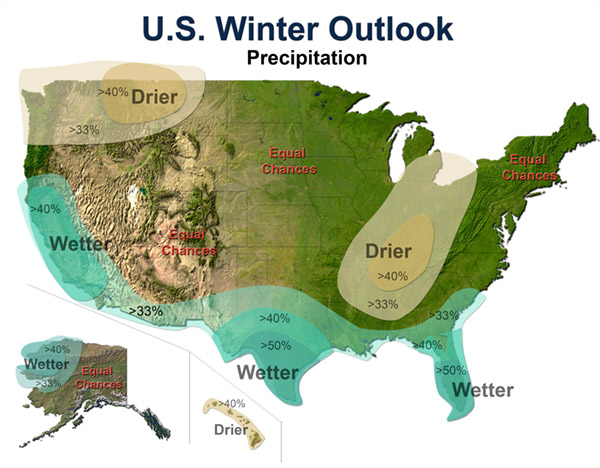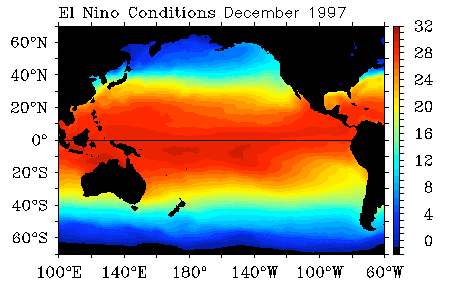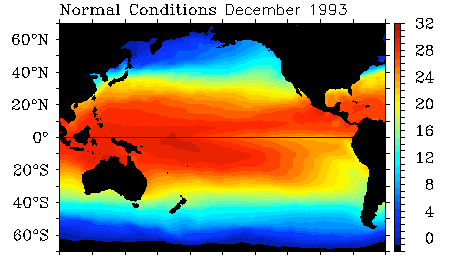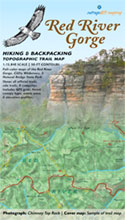Predicting climate in the old days relied upon observing cues in nature. The Farmers’ Almanac finds that people looked at woolly worms in late summer in get a sense of winter. The more black hairs on the worm, the colder and wetter the winter. Of course woolly worms come in all configurations of black and orange colorings so how could a worm’s coat predict winter? It can as an analogy; you look at the forecast to decide which coat you’re going to wear before leaving home. I think you would want to wear a black coat as opposed to a white coat on a very cold and sunny day to maximize the amount of solar energy you could absorb. Woolly worms just plan far ahead.
Today we track global changes in wind patterns and sea surface temperatures to predict weather conditions. NOAA’s Climate Prediction Center has issued a climate forecast for this winter based on the El Niño pattern emerging in the Pacific Ocean.
Below are winter predictions for the U.S. indicating greater or lesser chances for departures in average winter temperatures and precipitation.


El Niño is a departure from average sea surface temperatures created by a change in the intensity and direction of equatorial winds. In a normal period, strong easterly trade winds blow across the Pacific and upwell cold, nutrient rich waters on the west coast of South America. These same winds also pile up water in the western Pacific so that the sea surface is about 2 feet higher at Indonesia than at Ecuador.
In an El Niño cycle, the winds are not as intense and warmer sea surface temperatures extend further to east. This change has a global impact on weather with increased precipitation on the west coast of South America and the south & east coasts of North America. Warmer than normal conditions also occur at higher latitudes in North America and over the Pacific ocean.

El Niño Sea Surface Temperatures in °C




 So the month of May is nearly done and with it, ends the month-long celebration of the bike and human-powered travel. As a hiker, I often worry about my environmental impact during a drive to a favorite trailhead.
So the month of May is nearly done and with it, ends the month-long celebration of the bike and human-powered travel. As a hiker, I often worry about my environmental impact during a drive to a favorite trailhead.
 5th Edition Red River Gorge Backpacking Map
5th Edition Red River Gorge Backpacking Map




You must be logged in to post a comment.